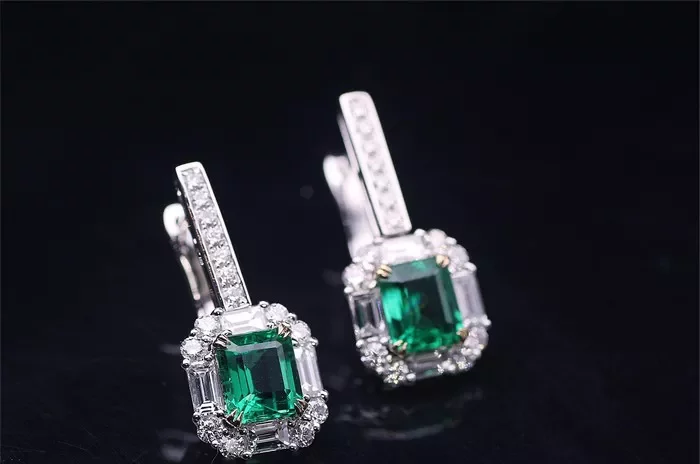Emeralds, with their rich green color and timeless allure, have been prized gemstones for centuries. However, not all emeralds are created equal. Some are formed deep within the earth over millions of years, while others are grown in laboratories under controlled conditions. In this article, we’ll explore the differences between lab-created emeralds and natural emeralds, including their formation, characteristics, value, and ethical considerations.
Formation of Lab-Created and Natural Emeralds
The primary difference between lab-created emeralds and natural emeralds lies in their formation process:
Natural Emeralds: Natural emeralds are formed deep within the earth’s crust under conditions of high pressure and temperature. They belong to the beryl family of minerals, with their green coloration attributed to trace amounts of chromium, vanadium, and iron within the crystal structure. The formation of natural emeralds typically involves the crystallization of beryl-rich solutions in metamorphic or igneous rock environments over millions of years. This slow and natural process results in the formation of emeralds with unique characteristics and inclusions.
Lab-Created Emeralds: Lab-created emeralds, also known as synthetic or cultured emeralds, are grown in laboratories using advanced techniques that mimic the natural processes of emerald formation. These synthetic emeralds are typically created using hydrothermal or flux-growth methods, where beryl crystals are grown from a solution of chemical precursors under controlled conditions of temperature and pressure. While lab-created emeralds have the same chemical composition and crystal structure as natural emeralds, they lack the natural inclusions and growth patterns found in stones formed deep within the earth.
What Is the Difference Between Lab-Created Emeralds & Natural
While lab-created emeralds and natural emeralds share many similarities in terms of appearance and chemical composition, there are subtle differences that distinguish the two:
Color: Both lab-created and natural emeralds can exhibit a range of green hues, from light to dark and from bluish-green to yellowish-green. However, natural emeralds often display a more nuanced and complex coloration due to the presence of trace elements and inclusions. The color of natural emeralds is influenced by factors such as the presence of chromium and vanadium, as well as the amount of iron within the crystal lattice. Lab-created emeralds may lack some of the subtle color variations and depth seen in natural stones.
Clarity: Natural emeralds are known for their characteristic inclusions, which are often referred to as “jardin,” the French word for garden. These inclusions are formed during the crystal’s growth process and are considered part of the stone’s unique identity. Lab-created emeralds, on the other hand, may be relatively free of inclusions or may exhibit different types of inclusions that are characteristic of the growth method used in the laboratory.
Durability: Both lab-created and natural emeralds have a hardness of 7.5 to 8 on the Mohs scale, making them relatively durable gemstones for everyday wear. However, natural emeralds may be more prone to fractures and other internal flaws due to their formation process. Lab-created emeralds, being grown in a controlled environment, may have fewer internal flaws and may be more consistent in terms of durability.
Price: One of the most significant differences between lab-created and natural emeralds is their price. Natural emeralds, particularly those of high quality and exceptional clarity, can command premium prices in the gemstone market due to their rarity and natural beauty. Lab-created emeralds, on the other hand, are generally more affordable and accessible, making them an attractive option for those seeking the look of an emerald without the high price tag.
Conclusion
In conclusion, the differences between lab-created and natural emeralds extend beyond their formation and characteristics to include considerations of price, ethics, and environmental impact. While both types of emeralds offer beauty and allure, they cater to different preferences and priorities among consumers. Whether you choose a natural emerald for its unique inclusions and rarity or opt for a lab-created emerald for its affordability and ethical sourcing, both options provide an opportunity to enjoy the timeless beauty of this captivating gemstone. Ultimately, the choice between lab-created and natural emeralds comes down to personal preference, budget, and values, allowing each individual to find the perfect emerald to suit their needs and desires.


